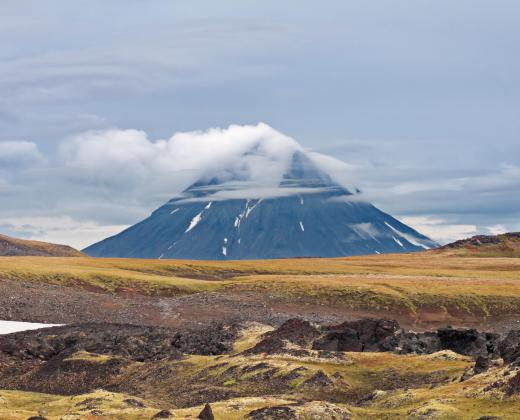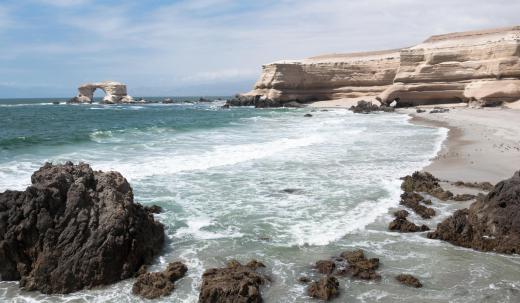What is the Ring of Fire?
 Michael Anissimov
Michael Anissimov
The Pacific Ring of Fire is a 40,000 km (25,000 mi) stretch of geologically active land extending in a horseshoe shape around the Pacific Rim. It gets its name from the numerous volcanoes and earthquakes along it — 542 volcanoes and thousands of minor earthquakes every year. The Ring of Fire is the most volcanically active area on Earth: 50% of the world's active and dormant volcanoes can be found here, 90% of the world's earthquakes, and 81% of the world's major earthquakes.
The Ring of Fire passes through Chile, Peru, Ecuador, Colombia, Panama, Costa Rica, Paraguay, El Salvador, Guatemala, Mexico, the United States, Canada, Russia, the Philippines, Indonesia, the Mariana Islands, the Solomon Islands, Tonga, and New Zealand. It is a wide area, several hundred miles in width. The Ring of Fire exists due to interaction between tectonic plates — it marks the boundary of many major plates, including the Pacific plate, the South American plate, the Nazca plate, the North American plate, the Filipino plate, and the Australian plate. Many of these plates are in competition, either sliding parallel to each other or directly into and on top of each other (called subduction). Sometimes, great amounts of tension build up and are suddenly released, causing earthquakes.

Another characteristic of the Ring of Fire are numerous ocean trenches, marking the boundaries where one plate, always an oceanic plate, is subducted beneath the continental plate. This occurs because the oceanic plates are made of a denser material, causing them to sink more readily than continental plates. The oceanic plates are constantly being subducted at the edges, melting as they are drawn back into the mantle. Near the center of the oceans, features called oceanic ridges are where new crust is produced (volcanically) to replenish the subducted crust.

Some of the biggest trenches at plate boundaries are the Peru-Chile trench, the Middle America trench, the Aleutian trench, the Kurile trench, the Japan trench, the Izu Bonin trench, the Ryuku trench, the Philippine trench, the Marianas trench, the Sunda trench, the Bougainville trench, the Tonga trench, and the Kermadec trench. The Marianas trench is home to the Challenger Deep, the lowest crevice in the oceans, and by extension, the lowest point on the surface of the planet.
AS FEATURED ON:
AS FEATURED ON:













Discussion Comments
How deep are the trenches that replenish the oceanic plates of the ring of fire? Will these oceanic trenches ever build new landmasses like the ring of fire volcanoes? It seems like if the volcanoes in the trenches are spewing out more rock than is being subducted under the continental plates, new continents would spring up over the course of a few hundred million years.
well anon25865 it has a lot to do with earthquakes because it is a combination of plates that are constantly active.
What does the ring of fire have to do with earthquakes?
Post your comments